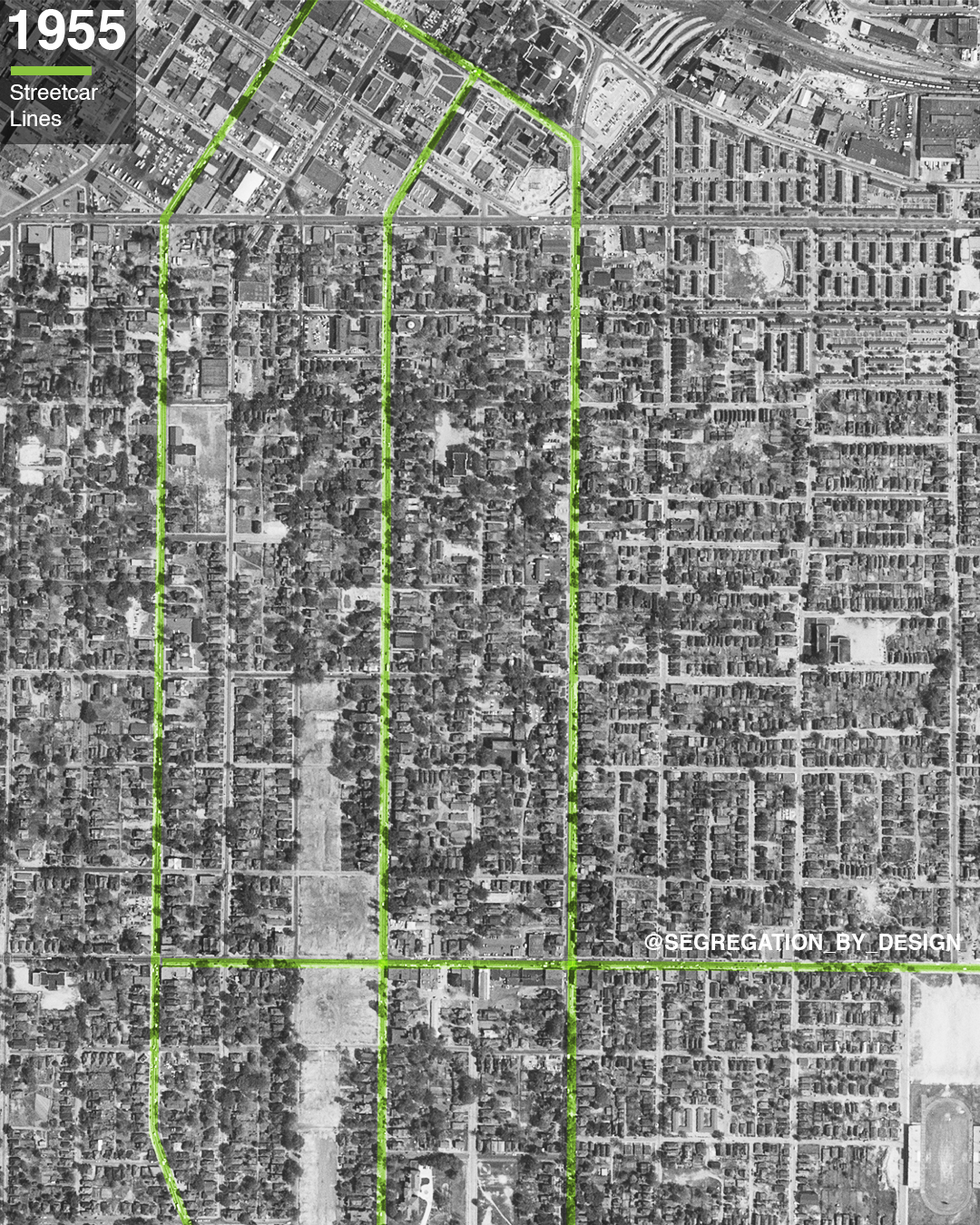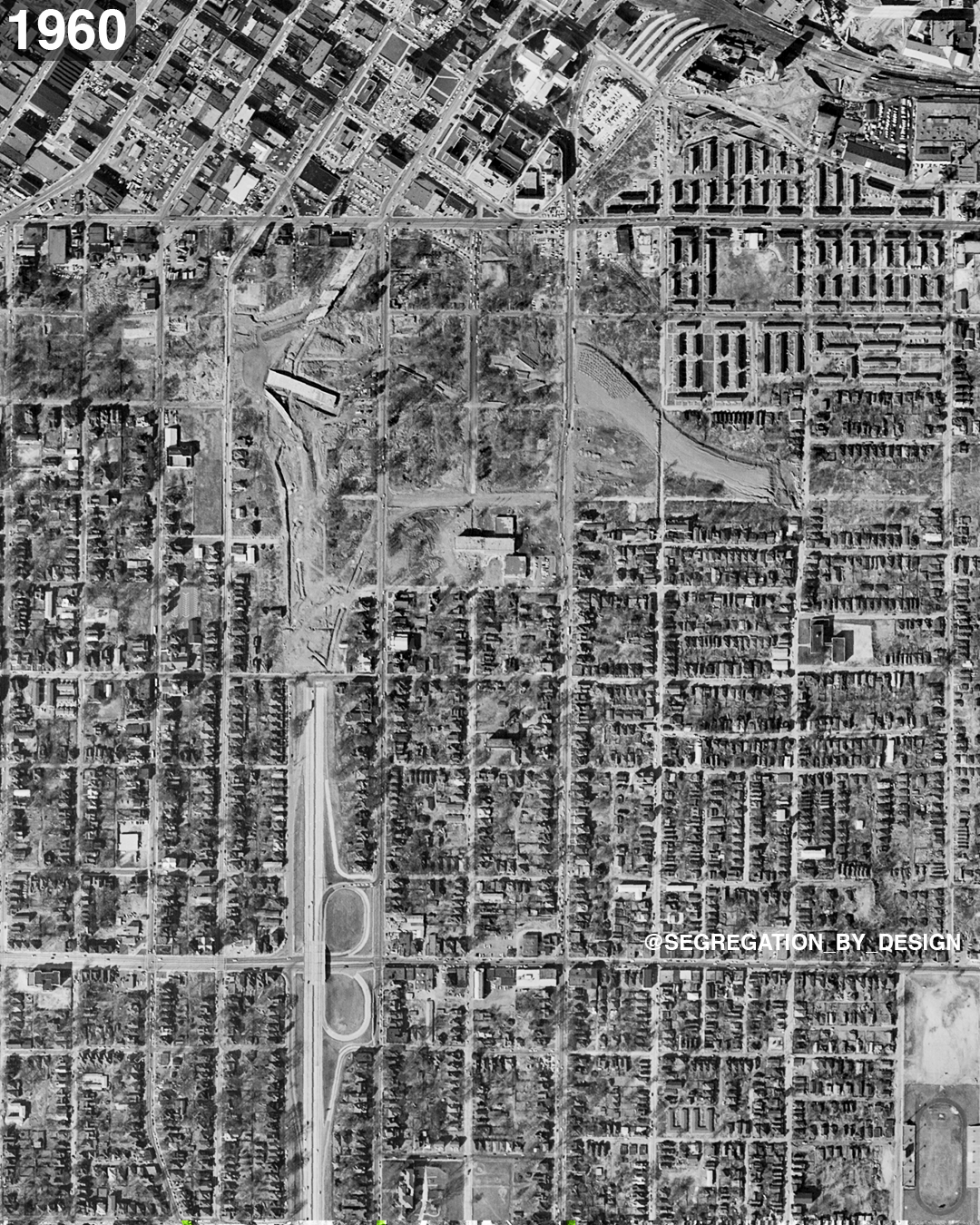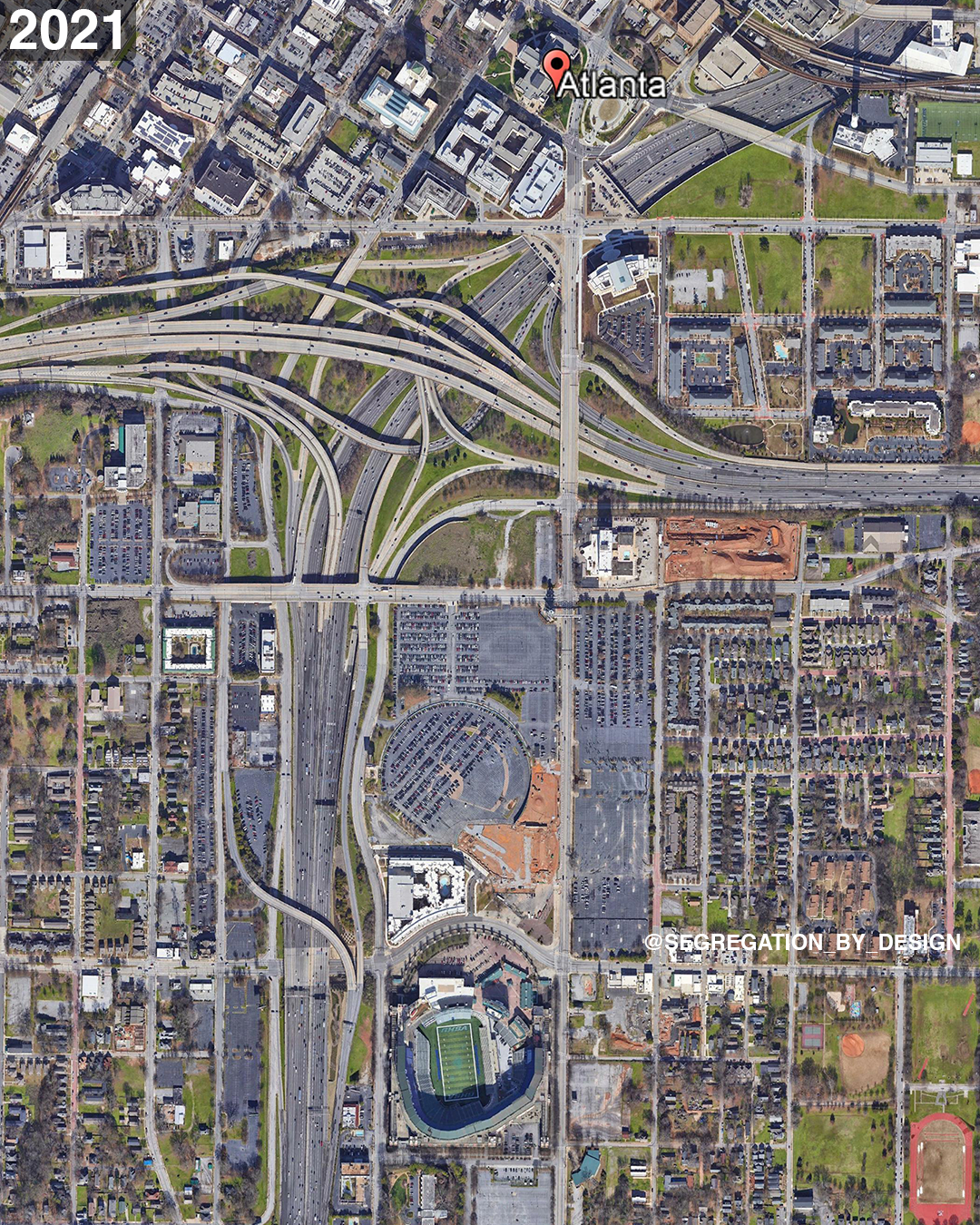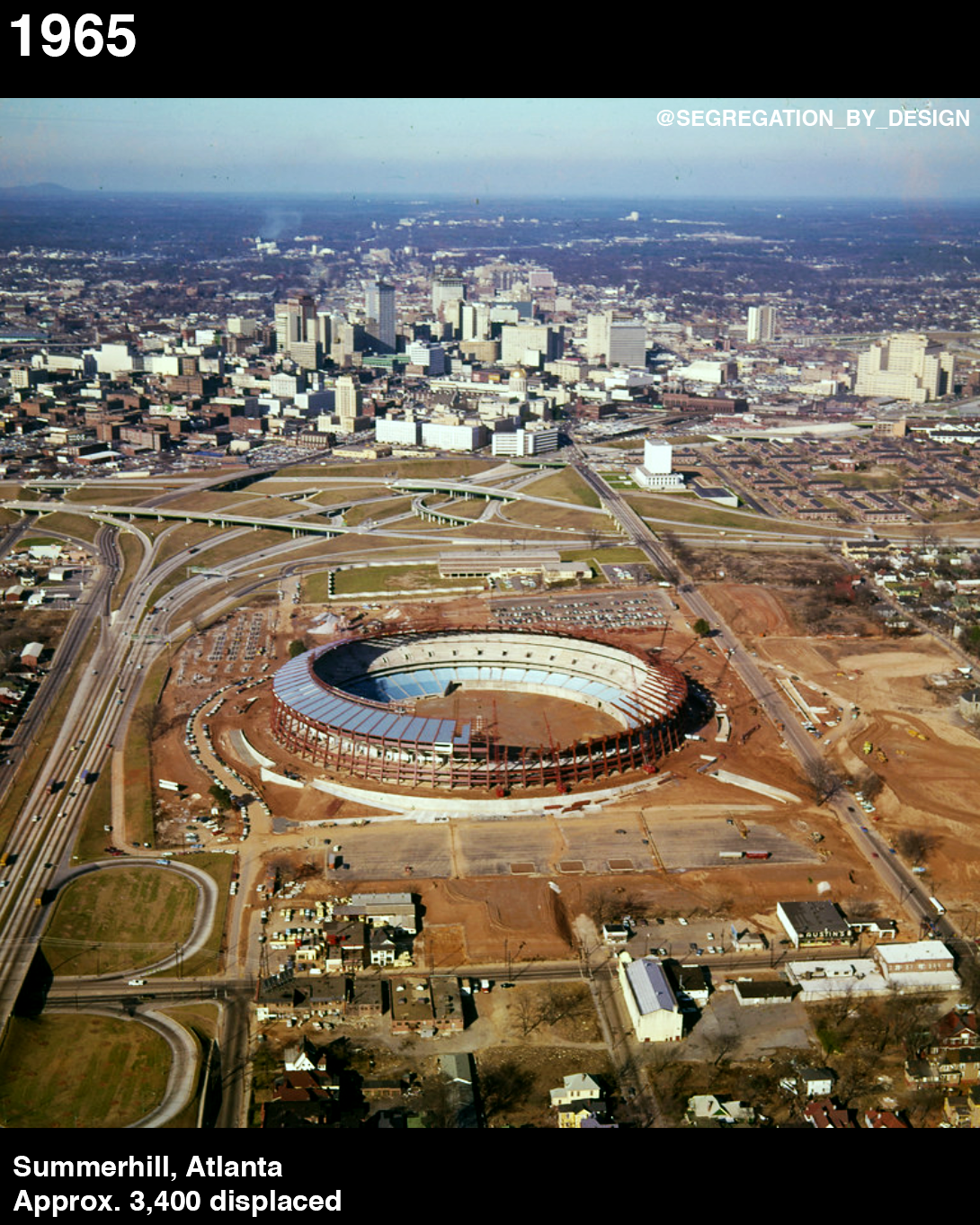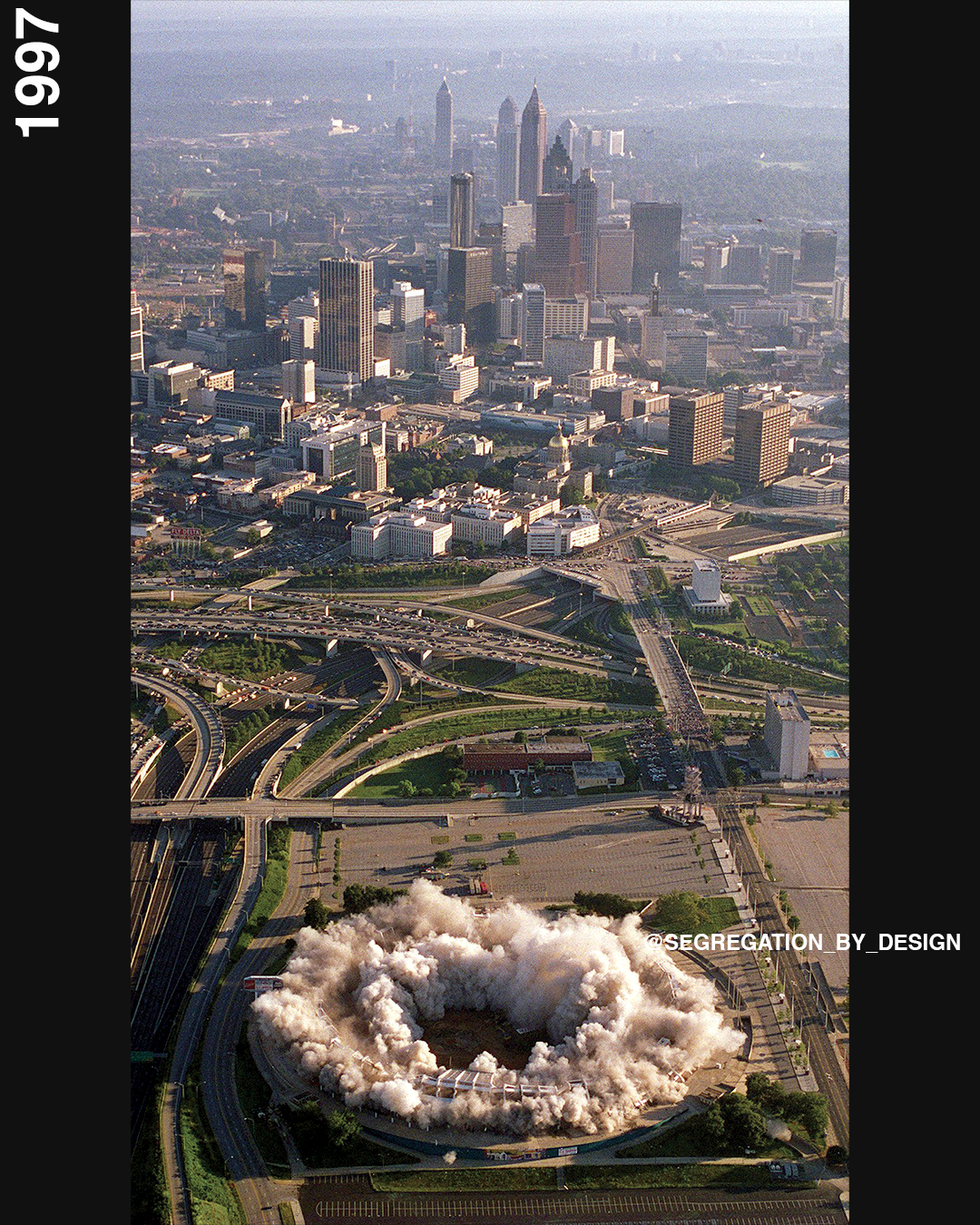ATLANTA: SUMMERHILL
Roughly 3,400 people were displaced in Mechanicsville and Summerhill, two of Atlanta's oldest residential neighborhoods. 68% of those displaced were people of color (source: @urichmond). Much of the rest were eastern European immigrants. In 1960 the interstate plowed through and divided the two neighborhoods, and in Summerhill entire blocks of businesses and homes were wiped out for the construction of the Atlanta-Fulton County Stadium. 26 years later the stadium was demolished. The site became a parking lot for a new, larger stadium which even further encroached on the neighborhood.
Summerhill, to the east of the freeway, is one of two neighborhoods in Atlanta where African-Americans were allowed to settle during Reconstruction. Due to the official restrictions on where people of color could live in Atlanta, Summerhill became one of the first settlements of freed slaves after the Civil War. Before desegregation, Summerhill was home to the first public school for African-Americans in Georgia. In the early 20th century the neighborhood also became home to a large population of eastern and southern European immigrants.
Mechanicsville, to the west of the freeway, was named for the many railway workers living in the area. Railroads were one of the few industries to employ African-Americans and the neighborhood was diverse, vibrant, and uniquely mixed-income.
Both neighborhoods were connected to downtown and the rest of the city by a dense streetcar network, which had been eliminated and deconstructed by the end of the 1950s.
Today these neighborhoods face a different threat: gentrification. Since the 1996 Olympics, new development in the area, combined with its relative proximity to downtown, has created pressure on the area. Without adequate protections (as well as the construction of affordable housing and equitable transit) the families of color who survived Urban Renewal—who have been able to accrue generational wealth in the area—may yet again be displaced.
